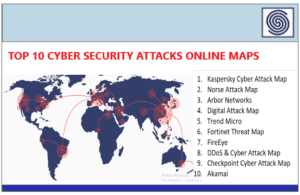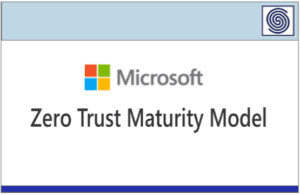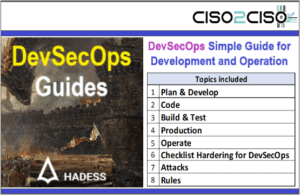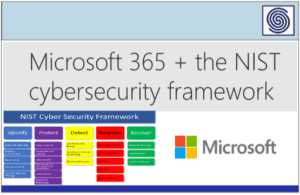Source: levelblue.com – Author: hello@alienvault.com.
The growth of remote work and widespread cloud adoption has transformed how and where employees access corporate network resources as well as private and public applications and web sites. Today’s workforce demands access to corporate resources from anywhere, whether at home, on the go, or in traditional office settings. For organizations, this shift continues to present challenges in managing and securing user access without compromising usability or increasing risk. Many organizations continue to rely only on older technology, such as legacy firewalls, to secure their on-premises and remote users.
While traditional measures like firewalls remain a cornerstone of network security, their limitations are becoming increasingly evident in the face of modern, distributed work environments. Firewalls remain a key component of network security—they form a robust barrier to keep malicious actors out of the network. However, in today’s highly distributed environments, relying solely on firewalls results in critical blind spots. Firewalls were designed to operate within a defined perimeter, monitoring and controlling access to resources within corporate offices. They were not built to secure hybrid infrastructures where users access systems in multiple locations across multi-cloud platforms and SaaS environments.
Modern security challenges require augmenting firewalls with advanced access controls and security layers that:
- Limit access based on user identity, device health, and contextual factors like location.
- Protect data traveling to and from cloud-based systems and remote endpoints.
- Provide insights into user activity for proactive threat detection and incident response.
These additional controls, such as identity-based authentication and dynamic security policies, are imperative in securing networks that extend well beyond the traditional office perimeter. This ensures organizations can actively defend their systems while also accommodating the demands of modern work models.
Without these additional controls, attackers can exploit weaknesses in legacy approaches, such as broad permissions granted by default, which could expose sensitive systems to unauthorized users.
Why Traditional Access Protections Fall Short
Legacy technologies like Virtual Private Networks (VPNs) were once the backbone of secure remote access. However, their limitations have grown increasingly apparent as hybrid workforces and cloud systems evolve. VPNs rely on implicit trust—they grant users overly broad access to the network once authentication is completed. This default model creates significant risks, as it fails to ensure ongoing validation of user behavior, session integrity, or attempts to access unauthorized resources.
Some of the core shortcomings of legacy technologies include:
- Issues with scalability and flexibility: VPNs were not built to handle the massive influx of remote users in today’s workforce. This results in performance slowdowns and bottlenecks that can hinder productivity.
- Lack of granular control: Granting broad access to the network creates difficulty in restricting users to only the applications or data they actually need. This increases the attack surface and exposes critical systems to unnecessary risks.
- Poor visibility across hybrid environments: Traditional protections provide limited visibility into user activity, especially when systems and data are spread across diverse infrastructures like cloud platforms and on-premises environments. This lack of visibility makes it harder to spot suspicious behavior or stop attacks early.
These shortcomings leave organizations vulnerable to insider threats, errors, and cyberattacks, highlighting the urgent need for a more secure and adaptable approach to access management. Organizations relying solely on these legacy technologies are left with an insecure and inefficient foundation for access control.
Zero Trust Network Access: A Game-Changer for Modern Access
Zero Trust Network Access (ZTNA) offers a modern approach that directly addresses the limitations of legacy technologies, transforming how organizations control access in distributed environments. At its core, ZTNA operates on the principle of “never trust, always verify,” ensuring access is dynamically granted based on user identity, permissions, and device context for each session.
ZTNA mitigates the risks associated with traditional access protections by:
- Minimizing the attack surface: Unlike VPNs, ZTNA creates direct, user-specific connections to only the resources the user is authorized to access—no broad or implicit trust is assumed.
- Strengthening security for remote and third-party users: With identity-based policies, organizations can securely extend access to employees, contractors, and third-party partners without sacrificing control.
- Achieving visibility across all access points: ZTNA provides centralized monitoring and logging of access activity across hybrid networks, improving the organization’s ability to spot issues in real time.
- Enhancing scalability without compromising usability: Designed for modern infrastructures, ZTNA can scale effortlessly to support even the largest hybrid workforce while offering a seamless user experience.
As organizations transition to the cloud and embrace hybrid and remote work, ZTNA emerges as a critical tool for modernizing access management. By addressing the inherent weaknesses of legacy solutions, ZTNA ensures that secure access can keep pace with the demands of today’s hybrid work environments.
|
Feature |
Legacy tools (Firewall/VPN) |
ZTNA |
|
Perimeter-based technology |
Yes |
No |
|
Granular access |
Limited |
Application-level access |
|
User experience |
Often degraded |
Seamless and adaptive |
|
Cloud compatibility |
Poor |
Excellent |
Email Security: An Additional Layer of Defense
In today’s increasingly sophisticated threat landscape, organizations cannot rely on a single layer of security. They need a holistic approach—one that integrates multiple security components to address evolving vulnerabilities. While ZTNA provides a robust framework for managing and controlling access to critical resources, email security adds another critical layer to defend organizations against one of the most exploited initial attack vectors: email.
Email remains the most common means of delivering phishing scams, malicious attachments, ransomware, and other destructive cyberattacks. Even as organizations implement advanced access controls and secure their networks, a malicious email sent to a distracted employee can unravel these protections in seconds. Because email operates as a primary gateway for communication—and attack—integrating comprehensive email security within a broader framework like ZTNA is essential for modern organizations that need to defend both access and communication.
Why Integration Matters
Combining ZTNA with email security ensures that two critical controls for organizational security—controlling access and safeguarding communication—provide added, multi-layer protection. Access control technologies like ZTNA ensure that users reaching internal systems and applications are continuously verified and only granted access to what they need. Email security controls help address the inherent danger of employees unknowingly falling victim to a malicious email delivering a weaponized bundle. Email-initiated attacks are among the most common initial entry points for attacks, delivering malicious files via attachments as links to malicious sites.
By integrating email security with ZTNA, organizations can benefit from:
- Comprehensive protection at multiple layers: ZTNA restricts access to sensitive systems, while email security stops attackers from breaching the organization through phishing or malware delivered via email. Together, these solutions minimize entry points for threats.
- Enhanced threat visibility: An integrated strategy allows organizations to monitor both access activity and email communications, providing a broader view of where vulnerabilities may lie or where attackers are attempting to infiltrate.
- Reduced response and remediation times: When combined effectively, integrations between ZTNA and email security enable faster identification and containment of threats—whether originating from compromised access credentials or malicious email.
The Future of Layered Defense Strategies
Organizations that embrace a layered, integrated approach to cybersecurity position themselves to stay ahead of attackers. While standalone tools are important, the key lies in interweaving solutions like ZTNA and email security into a unified strategy. This ensures no single avenue—whether through unauthorized access attempts or malicious email payloads—can jeopardize the organization’s security posture.
The need for integration isn’t just about plugging gaps, it’s also about building a truly adaptive defense—one that ensures communication and access tools, as essential as they are, don’t become vulnerabilities. When these layers work together, they create an ecosystem where each component amplifies the effectiveness of the other, drastically reducing the risk of breaches.
Modernizing Your Network with LevelBlue
Transitioning from legacy technologies to modern solutions like Zero Trust Network Access (ZTNA) can be a complex and challenging process. Organizations often face difficulties such as identifying the right approach, addressing gaps in their current infrastructure, and ensuring a seamless migration without disrupting daily operations. To navigate these challenges, many turn to third-party experts, such as security consultants, service providers, or software vendors, for guidance and support.
LevelBlue Consulting provides comprehensive services designed to help organizations modernize their network security while maintaining operational continuity.
Their offerings include:
- Comprehensive assessments: LevelBlue Consulting evaluates current network infrastructure and access controls to identify vulnerabilities and opportunities for improvement.
- Tailored recommendations: Based on the organization’s unique needs, actionable insights and strategies are provided for transitioning from legacy technologies to ZTNA and other modern solutions.
- Seamless implementation: Expert teams work closely with organizations to ensure smooth deployment, minimizing disruptions to daily operations.
- Ongoing support: Continuous monitoring and management services are provided to secure networks and maintain efficiency over time.
By leveraging the expertise of LevelBlue Consulting, organizations can confidently adopt modern access control solutions like ZTNA, ensuring a secure and resilient approach to protecting against emerging threats.
Contact us today to learn how our comprehensive assessments and strategic recommendations can guide you through modernization. Let’s ensure your network is secure, scalable, and prepared for the future.
Original Post url: https://levelblue.com/blogs/security-essentials/enhancing-accessibility-and-managing-access-control-for-a-hybrid-workforce
Category & Tags: –
Views: 2




















































